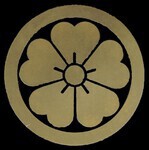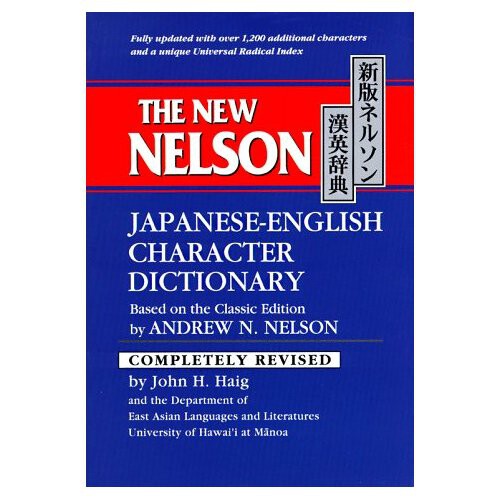-
Posts
3,242 -
Joined
-
Days Won
99
Content Type
Profiles
Forums
Events
Store
Downloads
Gallery
Everything posted by Guido
-
Yes, sure, but some opinions are more educated than others. But I fully agree with you that most threads discussing the abilities of the different Shinsa groups by a bunch of armchair experts and Nihontô bottomfeeders (present [NMB] company, as always, excluded) are a total waste of time. If people have such little confidence in the "experts", why do they submit a blade in the first place? Write your own Kanteishô, like that guy in Ohio, and own countless Yasutsuna, Kunitoshi, Masamune and other amazing swords. I, in the meantime, will stick with the NBTHK.
-

3 minutes at the Dai Token Ichi
Guido replied to Rich T's topic in General Nihonto Related Discussion
Here's the website of last year's DTI: http://www.zentosho.com/daitoichi.html And here's how to get there at the Tôkyô Bijutsu Club: http://www.toobi.co.jp/club/index.html -
Simon, I'm not an expert on this, but shouldn't you have used Tokusa (http://www.namikawa-ltd.co.jp/cgi-bin/item_e.cgi?cate=14&no=36) before applying Ibota?
-
You're cracking me up, Koichi! :lol: However, not being too fond of Mochi, I'd rather associate it with Yakiniku. :D
-
It would be interesting to know which dealer started that totally moronic rumor. Maybe something along the lines of "buy'em while you still can" to boost his sales. Oh, and of course I would be royally [insert obscenity] if my article about sword laws becomes obsolete after I put all that work into it ...
-
What we *think* is pretty irrelevant as long as no facts are presented. Last thing I heard, Elvis is still alive ....
-
My experience with gold and silver fittings: some of them stay the same color / patina wherever you take them, some get an opaque brownish (silver) or blackish (gold) hue. Maybe it depends or the purity or whatever, I never was able to figure out. The funny part is that most of my fittings / Koshirae were bought in Japan, and consquently moved with me to the US, China, Germany and back to Japan. Only when returning to the "homeland" did tarnishing occur. Beats me. Anyhow, I do what I was told by those Japanese collectors - and one Shiroganeshi -who are more knowledgeable than me, and use clear nail polish on the tarnishing prone parts. It doesn't do any permanent harm, i.e. is easily enough removed when so desired without any residue, and you have a hard time detecting it. Heck, I even got Tsuba through NBTHK Shinsa that had nail polish Fukurin without them minding (or maybe even not seeing?) it.
-
Inami Hakusui wrote that Kotetsu sold his swords for 100 Ryô (a gold coin containing 18 gramms of gold). 100 Ryô were 600 Koku; the Yoriki (assistant magistrates), for instance, earned 200 Koku a year.
-
No, it kantei'd to "Sagami no Kami Fujiwara Yasuyuki" . Attribution to a school is done when a sword is Mumei, and the individual smith can't be determined. Yasuyuki is a reasonably well documented smith; you'll find him in the Nihontô Meikan, Tôkô Taikan, and other books. As already mentioned elsewhere, a number of smiths moved from Mino to the neighboring Owari province in early Shintô times after Tokugawa Ieyasu built a castle in Nagoya in 1614. These smiths are known as Owari Seki, and their style became different from their native Mino province, showing a strong Sôshû influence, as in this example. The first generation Yasuyuki used the title Noto no Kami, and later Sagami no Kami, to which later generations succeeded. This sword was made by the Nidai Yasuyuki, who worked during the Kambun and Enpô periods.
-
Not at all, there are quite a few good Owari Seki blades out there. The attached pic shows a Sagami no Kami Fujiwara Yasuyuki Wakizashi that easily made Tokubetsu Hozon, and came darn close to Jûyô (according to a well known NBTHK official ). One of the very few cases I later regretted having sold it ...
-
Proper shaping of the entire Tsuka is a very challenging task in order to obtain a look that goes along and “flows†with the lines of the Saya and fittings. This is called Tsuka-nari, and it can't be achieved without the blade and Saya in hand. The Nakago has to be inlet very precisely to avoid any looseness that could lead to the wood breaking when stress is applied on the Tsuka during use. The two halves of the Tsuka are not aligned at the center of the Nakago, but slightly offset so that the edge of the Nakago faces solid wood but not the seam line to reduce the risk of breakage. Special care must be given to the outer dimensions of the Tsuka and fitting of the Fuchi and Kashira to allow for the later application of Samegawa. Once the wood core is properly shaped and Same is properly applied, the Mekugi-ana is opened by using an auger and reamer. The next step is the Tsukamaki. Then the Koshirae goes back to the Shirogane-shi who already made the Habaki and two temporary Seppa (i.e., rectangular copper plates with cutouts for the Nakago). He now will do the finishing work on the Seppa, adjusting their shape to ensure a pleasant transition between Tsuba and Fuchi, and Tsuba and Koiguchi. Often the rims of the Seppa are patterned by filing, and they will then be (gold) plated. So much for the idea that a block of wood - (properly) inlet or not - might be accepted as a sufficient basis for the above described work by any self-respecting craftsman .... :?
-
Psst, you're spilling all the beans: Milt doesn't know that dictionaries exist, otherwise he would have bought one for himself a long time ago ... :lol:
-
I surely hope he will. And I certainly don't condemn him. I'm not the sword police, he paid for it, it's his property now, and he can do with it whatever he pleases. There are countless Shinshintô (Bakumatsu), and even more Kotô (Sengoku Jidai) that lack artistic and historical value; weapons, not art objects. Just because it's old doesn't make it worthy of preservation. But even if someone decides to use a TokuJû Kanemitsu for cutting, trying to find out why Kanemitsu was rated Saijô-Ô-Wazamono, it's none of my concern. I'm not anytime soon going to travel the world, rescuing Nihontô from abusive or unappreciative owners. But back to the sword in question: I wouldn't use it for cutting since the blade's integrity can't be properly judged due to it being out of polish. Also, I wouldn't trust the antique mountings to hold up to frequent use. I also wouldn't have bought it as a collectible / investment. A polish will cost about US $ 2,000 (plus some for a new Habaki, Shirasaya, and Tsunagi for the Koshirae). This particular Kunisada doesn't seem to be a recorded smith, and there is no Kanteishô. So, one would have finally spent $ 8,000 on a sword that IMO is maybe worth half that much in full polish, and even that only because it comes with a decent period mounting. The reason why I thought we had a troll on NMB is simply that I couldn't believe someone spending $$$$ for an item that he has little knowledge of. $ 6,000 is quite some money for most people I know, and soliciting opinions *after* liberating the bank account of that sum is something I can't relate to.
-
The key-word in the description seems to be "nice". And what does "Blade is in faor condition, but no flaws." mean?
-
I didn't say it's *damaged* - I wouldn't call "scatched up / out of polish" a flaw per se. But I probably said too much already - after I pointed out the false description of papers that accompanied a Tsuba from ricecracker.com recently, one might get the (wrong) impression that I'm getting on their back. If you're happy with this sword, great. You obviously bought it as a user's sword, and I can't comment on it's usability from some pictures. So,if it cuts well - and for US $ 6,000 it should - that's all that counts. The question if it's worth the money is therefore moot. If you ask whether or not it's a wise investment as an art object, taking it's re-sale value into consideration, we're entering a totally different game.
-
A Mumei Shinshintô, without any papers, to which someone put sand paper. You have no idea what you bought, but dished 6K out for it. You're going to use it for "cutting". Sorry if I got something wrong, but is this a prank?
-
http://www.furuhonn.com/ http://www.daigakudo.co.jp/ http://www.koshoyama.jp/ Only Koshoyama sells abroad, but charges an arm and a leg for it; they're also very unreliable, sometimes take weeks to answer e-mails. After waiting 4 weeks for an answer, I bought the book somewhere else, and told them so after they finally answered. Now they ignore my mails. Furuhonn has the lowest prices for the best quality books ("slightly used" actually means "in pristine condition"), are very fast, and never, ever disappointed me. Daigakudo is very good, too.
-
This seems to be a scene from the Nô drama "Sanjô Kokaji", Inari and the fox spirit helping Munechika to forge the sword Kogitsune-maru. Very interesting!
-
James A. Michener said "The typical collector is a male, usually unbalanced in some direction, who, if he were normal, would not need to collect odd bits and pieces. I believe that any collector suffers from some kind of mental or psychological aberration, and that his collecting is a therapy which may run into a great deal of expense but which protects his sanity and allows him to operate in other fields fairly normally."
-
That's called "Wangata", not extremely uncommon, and often seen on Satsuma swords.
-
Thanks for doing that - it makes replying to posts much easier. Sorry for always being so anal when it comes to real names (my philosophy: if you have to say something, be man/woman enough to identify yourself), but I think "kendoman" kind of made my point much better than I could ever had ...
-
Oops, missed the 没 after the date ... Mental note to myself: engage brain before typing, make sure to read *all* that is written! Anyhow, the question of what kind of papers we're dealing with still remains. Anyone?
-
BTW: kind of a fishy Kanteishô, who's the 日本美術刀剣研究保存会? And issued Meij 13, that's 1880, right?
-
Nope, that's an Oni: short horns,hairy body, and the telltale claws and tiger fur pants. The face, however, resembles a Shikami, same as the last Tsuba Thierry posted. Well, as with many things Japanese, the lines get blurry sometimes. Add to that the artistic license, and you have food for dicussion for the next couple of decades ... ain't it fun?
-
Looks o.k. to me. This type is called Yorimaki 捩巻, twisted wrap, resulting in Kikkôgatabishi 亀甲形菱, tortoise shell shaped openings. Not very popular, but also not extremely rare.




